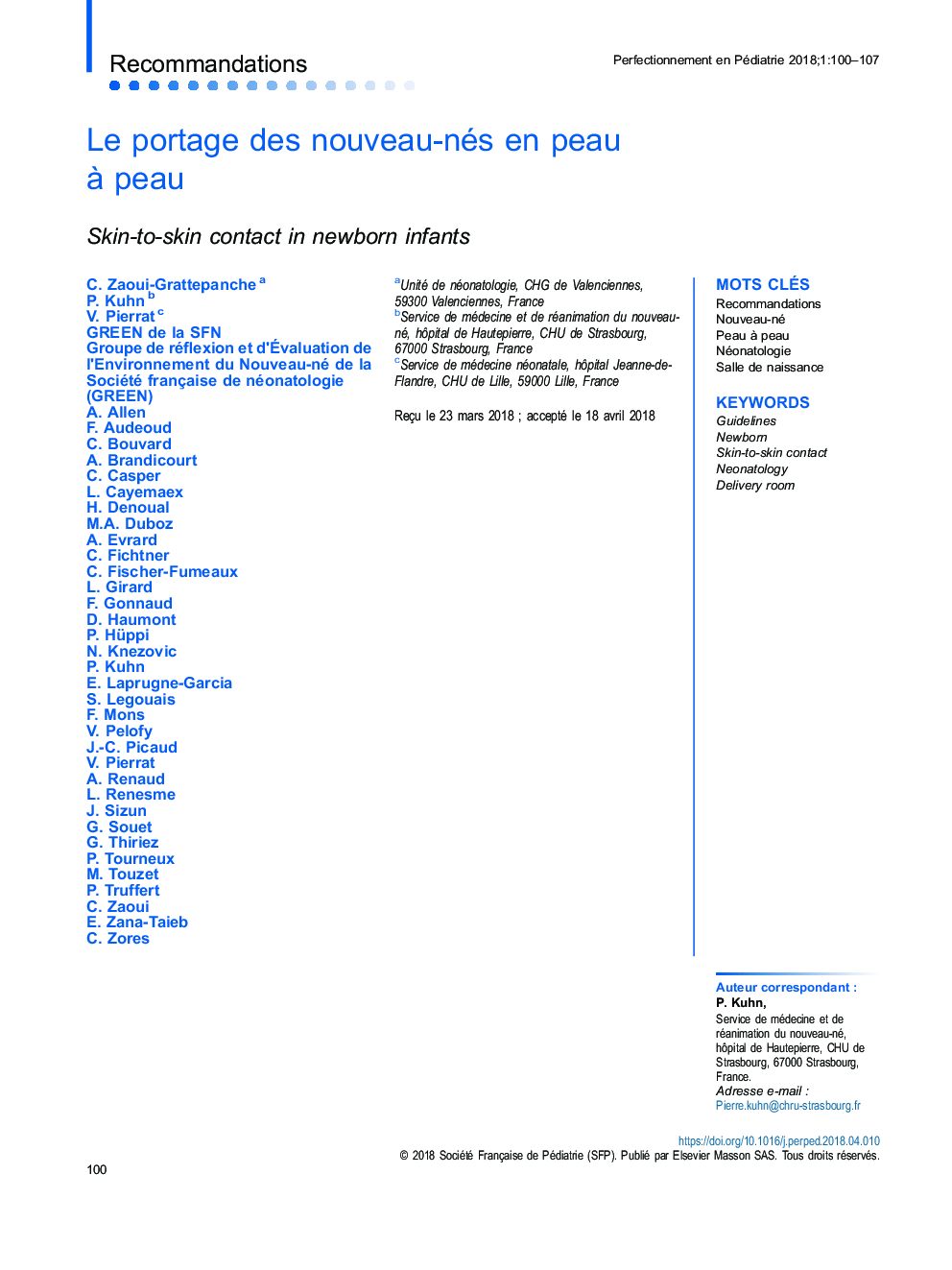| Article ID | Journal | Published Year | Pages | File Type |
|---|---|---|---|---|
| 8941030 | Perfectionnement en Pédiatrie | 2018 | 8 Pages |
Abstract
Skin-to-skin contact (SSC) is defined as the method of holding the newborn infant, wearing only a nappy and a cap, in an upright and prone position on the parent's chest, strictly skin-to-skin. The main objectives of the Group for Reflection and Evaluation of the Environment of the Newborn Infant were to evaluate the scientific rationale of SSC and to elaborate practical recommendations supporting this practice in neonatal units and the delivery room. A systematic literature review, following the methodology of the High Authority of Health, demonstrates its benefits on the infant's physiological stability, sleep, pain prevention and neurodevelopment, breastfeeding, attachment as well as parental stress. It is recommended that SSC be offered to all hospitalized preterm infants, as early and as continuously as possible, as soon as clinical stability is achieved. Written procedures to support the infant's transfer and surveillance, and a supportive environment for the infant and his/her parent are mandatory. This practice also seems beneficial to extremely preterm infants and/or intubated newborns, but requires a high level of expertise from teams. Early SSC in the delivery room with the mother is beneficial for breastfeeding as well as the behavior and the adaptation of term or near-term infants. SSC with the father also improves the child's behavior. Immediate SSC with the mother is strongly recommended for neonates â¥Â 35 weeks of gestational age who are clinically stable. It is recommended that each team inform and support the parents, and establishes appropriate safety/monitoring procedures to implement the practice of safe skin-to-skin contact in the delivery room.
Keywords
Related Topics
Health Sciences
Medicine and Dentistry
Perinatology, Pediatrics and Child Health
Authors
C. Zaoui-Grattepanche, P. Kuhn, V. Pierrat, GREEN de la SFN GREEN de la SFN,
